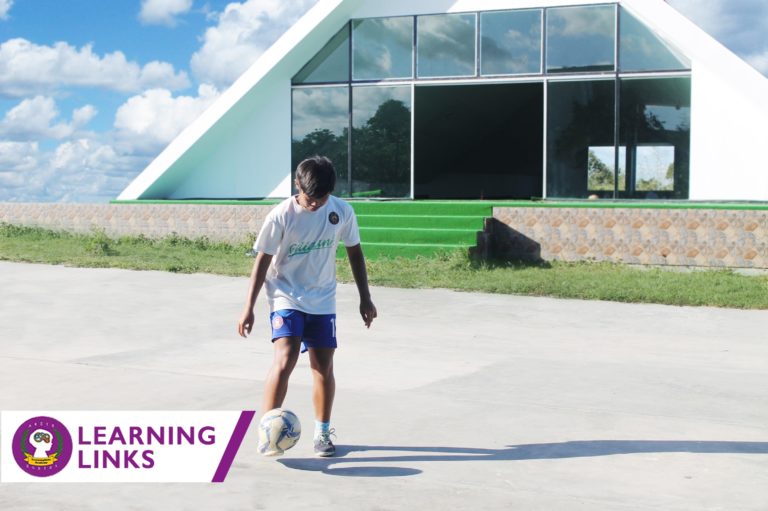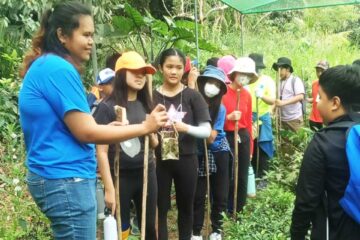SCHOOLS THAT OFFER MULTIPLE INTELLIGENCE LEARNING
Problem-solving ability, fluency in language, excellence in chess, and spatial manipulation – all of these have become an indication of a student’s intelligence. Most people from different walks of life also believe that a student should possess these traits to be considered as brilliant and top of the class.
Yet, this claim seems to be unfair. This is primarily because plenty of research now exist, showing that there are multiple ways to be called as intelligent. One supporting research is the Frames of Mind released by Howard Gardner emphasizing that each student possess a unique intelligence. One student might be intelligent in spatial manipulation, and the other might be intelligent in dancing. However, both are considered as intelligent in their own ways.
THINGS SHOULD CHANGE...
Indeed, it is hard to fully transform the education culture to cater students’ individual intelligence. But, we are now taking small steps. We start off by tailor fitting the teaching strategies to the students’ needs. Do we have schools now that practice multiple learning? Where can we really find schools that offer this?
In the Philippine context, there aren’t a lot of schools that offer multiple learning, but there are now some. The Learning Links Academy, as one of them, takes advantage of the theory to pattern the delivery of their lessons. The school, Learning Links Academy in Cavite is one of the known schools for applying multiple learning. They create myriad of activities for different intelligences with the aim to develop each student’s intelligence.

HOW IT'S DONE
The schools that adapted the multiple learning system have also undergone a redesigning of their teaching methods. This so-called redesigning of the construct of teaching comes in various ways. But it typically follows the steps of acquainting yourself with the student’s intelligences, creating a diverse lesson plan, and maximizing teaching through by individual growth. To understand how these steps are implemented in the classroom, here are the detailed examples of each step:
Acquaint yourself with students’ intelligences.
The famous fable entitled, the “Animal School” by George Reavis shows a lot of similarities with the Multiple Intelligence Theory. The fable is about a school made up of monkeys, fishes, ducks, eagles, and other animals. In their courses, all land animals are forced to swim, while all other marine animals are forced to climb on trees. After multiple attempts, everyone failed to accomplish this mission.

Moving quickly at the end of the story, we were left with one moral lesson – that we should allow fishes to swim, monkeys to climb, and eagles to fly in order to let them learn and develop. By understanding the moral of the story, we were also enlightened about the importance of allowing students to shine in their own special ways.
Applying this for the classroom preliminaries, it is advised that teachers should first be acquainted to the intelligences present inside the classroom. This could be done by making the below activities as the students’ first tasks:
- Surveys
- All about me projects
- Interviews with students
- Presentations on their self interests
- Running an MI test
By doing this, the teacher gets to know the students based on their learning preferences and capabilities. This will greatly help the teacher in brainstorming teaching strategies.
Create a diverse lesson plan
When creating a lesson plan, start by objectively identifying the topics you need to teach your students. After which, gather the results of intelligences from the first activity. This is important to let you identify the type of intelligences you need to focus and emphasize on. One way of creating an effective lesson plan, as proposed by Dr. Stephanie Knight, is by shifting schedule as shown below:
Monday – Use Logical-Mathematical intelligence by using number lines, graphs, and other brain games. Puzzle, mysteries, and logic games solving can also be added.
Tuesday – Bodily-Kinesthetic intelligence can be used by applying manipulatives, body formations, movement in the classroom. These can be through dancing, simulations, exercises, or any physical activity
Wednesday – Linguistic intelligence by using picture books, journaling, and poems in discussions. To make it more fun, you can also add their common interests like reading a book, playing word games, and writing novels.

Thursday – On Thursday, use Spatial intelligence by playing dominoes, cards, manipulatives, and flash cards with drawings inside the classroom. For spatial learners, information can be easily retained if it is presented with charts and graphs as well.
Friday – Apply Naturalistic intelligence by having some nature walk with observation journals. You can also emphasize studies on plants, animals, and everything about nature.
These are just examples but the lesson plan can be mixed up on different weeks to avoid repetitiveness.

Maximizing the teaching through enhancing individual growth.
Lastly, the effectivity of multiple learning does not end with being flexible with the lesson plan. Instead, it continues by allowing teachers to find a way in maximizing the student’s intelligence. This can be done by assessing possible room for the child’s improvements. And then, teach every student to enhance the talents they have into their full potential. Soon enough, each of the student will bloom in wonderful and unique ways.

IN CONCLUSION...
Allow Each Student to Spread Their Wings
In the ideal 21st century classroom, we want to see students that are driven to learn and are excited about going to school. We want to see students that are committed to education with the same magnitude of their commitment with their goals in life.
This world is indeed changing. In order to prepare our students with these changes, we should first go beyond the traditional learning we experienced in our times. Create reforms in the education system that will embrace inclusiveness – allowing each student to spread their wings. Because after all, these same students are the foundation stones in giving us a progressive future.



